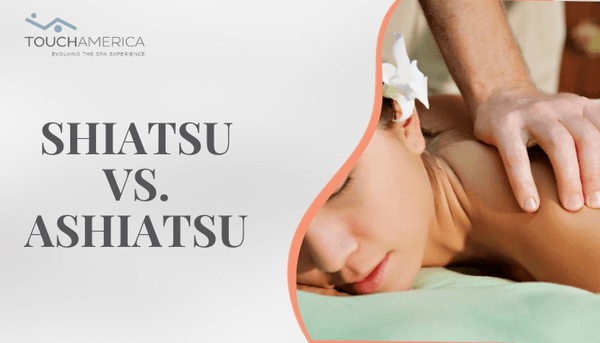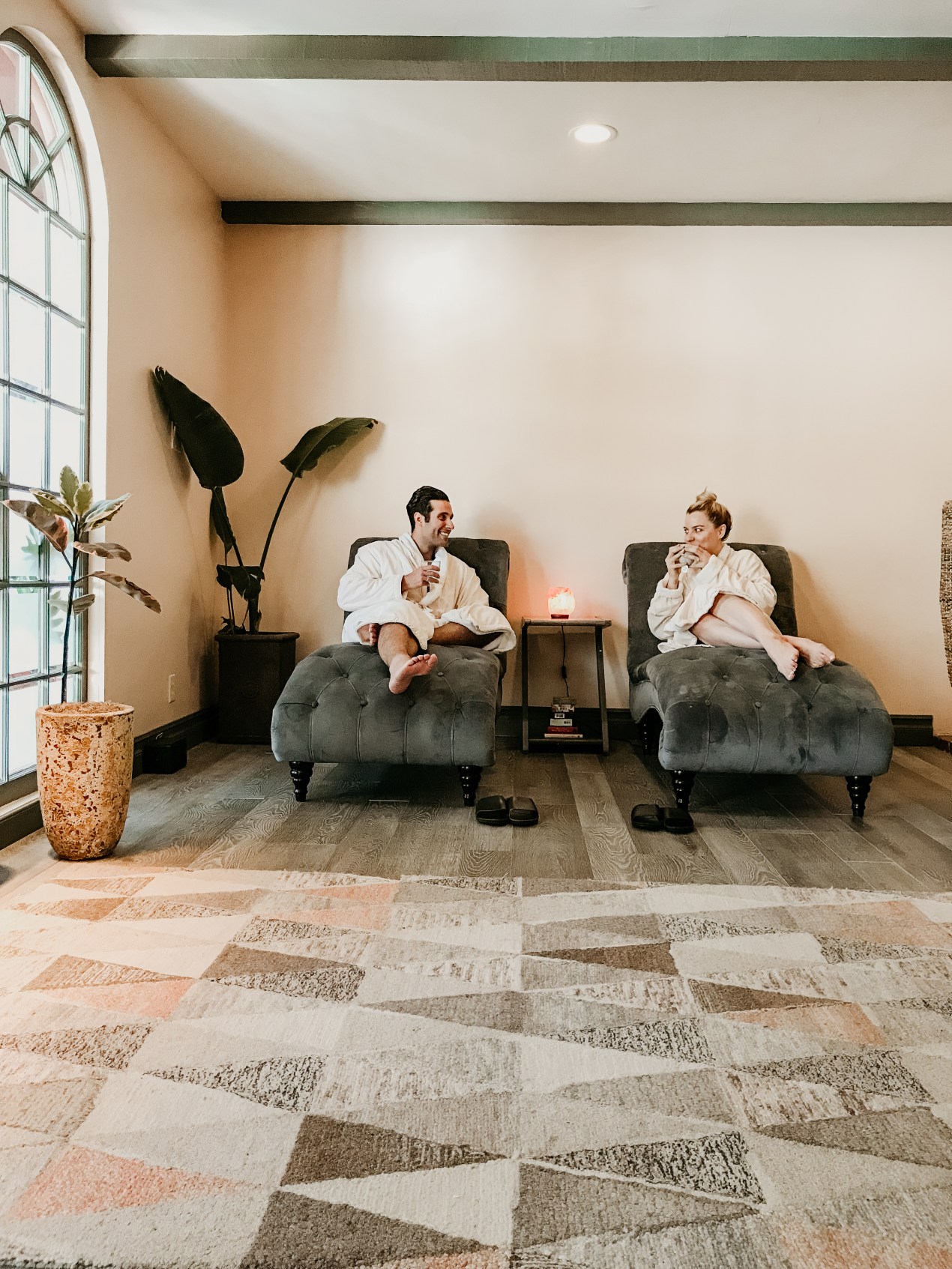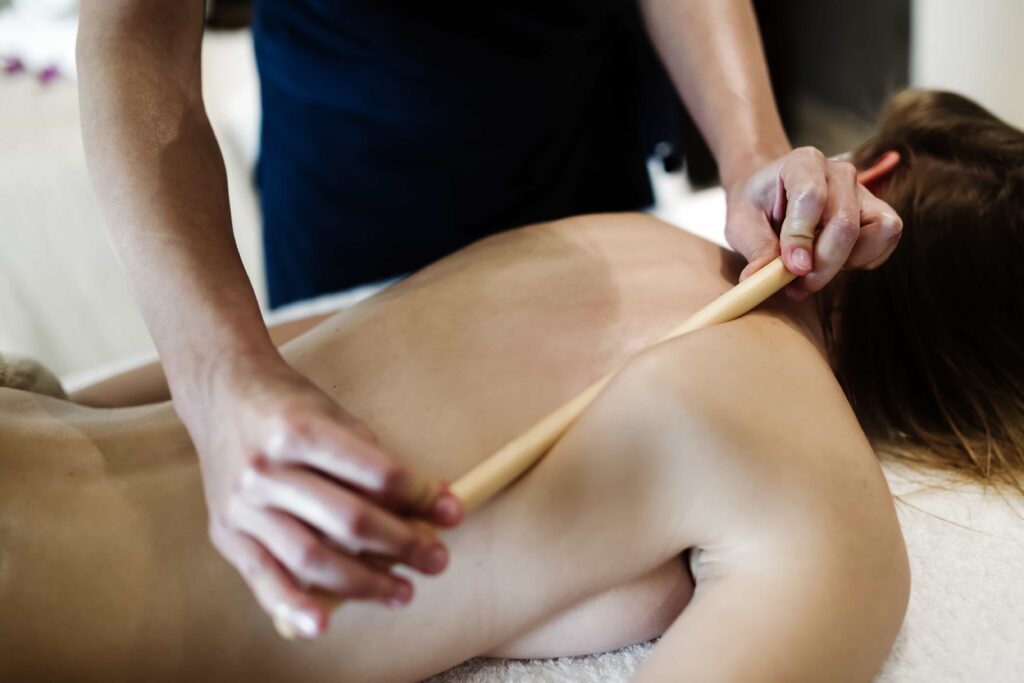Ashiatsu massage involves deep pressure using feet, while Shiatsu uses finger pressure along energy lines. These distinct massage techniques target different relief goals and experiences.
Ashiatsu is a form of massage where the therapist walks on the client’s back, using bars and other props for balance, to apply deep pressure. It’s an ancient practice with roots in Asia, designed to alleviate pain through deep tissue manipulation.
Shiatsu, originating from Japan, is more than a physical therapy; it’s a holistic approach aiming to balance the body’s energy. Practitioners use thumbs, palms, and sometimes elbows and knees, to apply moderate pressure in a rhythmic sequence along the body’s meridians or energy pathways. Both forms of massage are reputed for promoting healing, reducing stress, and improving circulation, but they differ fundamentally in techniques and the philosophies underlying them. Choosing between Ashiatsu and Shiatsu often depends on personal preferences and specific therapeutic needs.

Credit: www.touchamerica.com
Origins And Philosophy
Exploring the roots of different massage techniques reveals a world of history and healing. Ashiatsu and Shiatsu showcase unique traditions and philosophies, deeply ingrained in their practice. Each method offers a distinct experience driven by its origins. Let’s journey into the past to understand the foundations that support these powerful modalities.
Roots Of Ashiatsu
Ashiatsu’s history stretches back over thousands of years. Originating in the East, this massage technique utilizes the feet of the practitioner. The term “Ashiatsu” itself comes from Japanese: “ashi” means foot, and “atsu” means pressure. This practice was developed by Buddhist monks and was later refined across Asia, adapting to various cultural influences.
- Buddhist Monks – Creators of the original technique
- Adaptation Across Asia – Variations developed over time
- Body Harmony – Aimed to restore balance within the body
Shiatsu’s Traditional Concepts
The philosophy of Shiatsu is deeply woven with traditional Chinese medicine. “Shi” translates to finger, and “atsu” to pressure. Born in Japan, Shiatsu works with the body’s energy lines, or meridians. Practitioners believe in balancing the body’s energy to promote health and healing.
| Milestone | Impact |
|---|---|
| Early 20th Century | Shiatsu formalized in Japan |
| Meridians and Energy | Key concept in Shiatsu philosophy |
| Global Spread | Worldwide recognition and adaptation |
While Shiatsu includes gentle stretching and joint manipulation, the emphasis remains on energy flow. Practitioners use palm and thumb pressure to stimulate the body’s vital channels.
Technique Breakdown
Exploring the world of massage reveals diverse techniques, each offering unique benefits. Ashiatsu and Shiatsu stand out with distinct approaches. Understanding these can guide individuals to choose the ideal massage experience. Here is a technique breakdown for both styles.
Ashiatsu’s Barefoot Approach
Ashiatsu is a massage style where therapists use their feet to deliver pressure. It originates from the Japanese words “ashi” (foot) and “atsu” (pressure). This approach targets deep tissues effectively. Here’s how it works:
- Pressure Application: Therapists use the gravity and their body weight to apply pressure.
- Foot control: Skilled control of their feet allows therapists to vary pressure and address specific muscle groups.
- Bar Support: Overhead bars provide balance for the therapist while they work on the client’s body.
- Broad Contact: The broad surface of the foot covers larger areas than hands, offering a different sensation.
Handwork Harmony In Shiatsu
Shiatsu, meaning “finger pressure”, relies on the therapist’s hands to promote healing and relaxation.
- Acupressure Points: Focuses on specific points to release blockages and improve energy flow.
- Rhythmic Pressure: A sequence of pressures, applied in a rhythmic manner for therapeutic effects.
- Palms and Fingers: Utilizes palms, fingers, and thumbs to apply varied pressure.
- Whole Body Approach: Treats the entire body by aligning physical structures with inner energy elements.
Shiatsu’s methodology is more than mere touch; it’s a dance of pressure and release that harmonizes the body’s elements.
Health Benefits Compared
Exploring the health benefits of Ashiatsu and Shiatsu massages reveals unique advantages for the body and mind. Both styles of massage offer relief and healing, but in different ways. Let’s compare the health benefits provided by these two therapies!
Deep Tissue Impact Of Ashiatsu
Ashiatsu massage stands out for its deep tissue work. Practitioners use their feet to apply pressure, reaching deep muscle layers. Benefits include:
- Reduced Chronic Pain: Alleviates pain in muscles and joints.
- Better Posture: Corrects imbalances, enhancing alignment.
- Increased Circulation: Boosts blood flow, promoting healing.
- Flexibility Boost: Stretches muscles, improving flexibility.
These effects make Ashiatsu ideal for athletes and those with deep-seated tension.
Energetic Balance From Shiatsu
Shiatsu massage focuses on energy pathways called meridians. It targets energetic balance using hands, palms, and thumbs to stimulate these meridians. Key benefits are:
- Stress Reduction: Promotes relaxation, easing stress.
- Emotional Release: Helps release emotional blockages.
- Improved Sleep: Enhances sleep quality, fighting insomnia.
- Better Digestion: Aids digestion by stimulating abdominal area.
Shiatsu is suitable for those seeking emotional well-being and stress management.
Considerations For Your Wellness
Considerations for Your Wellness play a pivotal role in choosing between Ashiatsu and Shiatsu Massage. Both forms offer unique benefits. Your physical needs, mental state, and personal preferences govern the ideal choice for you. This section will guide you in choosing the right massage for your wellbeing.
Physical Conditions And Preferences
It’s crucial to assess your body’s needs and your comfort with touch techniques. Ashiatsu massage is a deep tissue strategy. Practitioners use their feet to apply pressure, promoting muscle relaxation and pain release. Suitable for athletes or those with muscle stiffness, it may not be the right choice for everyone.
Shiatsu massage involves finger and palm pressure and focuses on energetic pathways. It’s generally gentler and suits varying pressure sensitivities. It reinforces energy flow and can benefit those with chronic conditions.
- Consider your body’s reaction to deep pressure.
- Assess any sensitive spots or injury areas.
- Reflect on your preference for foot versus hand techniques.
Choosing Based On Mental And Emotional Needs
Your mental and emotional state bears equal importance. Ashiatsu’s deep release can turn stressful thoughts down. It induces a meditative state in some. If stress or anxiety levels are high, this might be the perfect escape.
Shiatsu’s energy focus aligns the body and spirit. It’s ideal for those seeking emotional balance or coping with emotional distress. Reflect on your emotional needs:
| Need | Ashiatsu | Shiatsu |
|---|---|---|
| Stress Reduction | Excellent | Good |
| Emotional Healing | Good | Excellent |
| Anxiety Control | Very Good | Good |
Decide which massage resonates with your emotional journey. Listen to what your mind and soul need. The right choice encourages overall wellness.
Real People, Real Experiences
Real people share their experiences with two unique types of massage: Ashiatsu and Shiatsu. Both styles have deeply affected those who have experienced them. Through their stories, you’ll discover the profound impact these massage techniques can offer.
Testimonials For Ashiatsu
- Jane Doe: “Walking on my back, the therapist reached deep knots. I felt inches taller after. Miraculous!”
- Carlos Rivera: “I’m a runner. After Ashiatsu, my recovery sped up. I’m back on track faster than ever!”
- Monica Singh: “Ashiatsu erased my chronic back pain. Now, I enjoy life without discomfort.”
Life Changes With Shiatsu
| Name | Experience |
|---|---|
| David Chen | “Shiatsu’s precision pressure transformed my stress into peace. It’s a part of my mental health routine now.” |
| Rachel Green | “Suffering from migraines for years, Shiatsu provided the relief I sought.” |
| Omar Patel | “Digestive issues held me down. After Shiatsu, I noticed a significant improvement.” |

Credit: www.udemy.com
Professional Insights
Delving into the world of massage therapies, we uncover the subtleties that differentiate Ashiatsu from Shiatsu. Professionals in the field bring their insights to the table, providing us with a deeper understanding of these practices. Let’s explore what experts have to say about these ancient forms of healing.
Experts Weigh In On Ashiatsu
Certified ashiatsu therapists emphasize its foundation in deep tissue manipulation. They outline the technique’s key benefits:
- Release of chronic muscle tension
- Improvement in blood circulation
- Enhanced posture and flexibility
Renowned for using foot pressure to soothe layers of muscle, ashiatsu targets the back. Practitioners note:
- Clients seek relief from pain and tightness
- Therapists use bars overhead for balance
- Pressure level is adapted to individual needs
Shiatsu Specialists Share Knowledge
Shiatsu, rooted in traditional Chinese medicine, works on balancing energy pathways. Experts point to shiatsu’s distinct features:
| Technique | Benefit |
|---|---|
| Pressure Points | Stimulates natural healing |
| Hand Palms & Thumbs | Relieves tension & stress |
| Rhythmic Sequences | Enables deep relaxation |
Shiatsu practitioners stress the importance of holistic wellness. Treatment goals they share include:
- Emotional and mental balance
- Nourishment of skin and tissues
- Enhancement of sleep quality
Emphasis is placed on gentle touch rather than force. This fosters an environment for self-healing.
Frequently Asked Questions
When Should You Not Do Shiatsu Massage?
Avoid shiatsu massage if you have infections, fever, heart conditions, are pregnant, or have acute injuries or skin conditions.
Is The Ashiatsu Massage Worth It?
Ashiatsu massage can be worth it for deep tissue relief and relaxation. Its barefoot technique applies broad pressure, which helps release muscle tension effectively. Always consult a professional to determine if Ashiatsu is suitable for your health needs.
Which Is Better Shiatsu Or Swedish Massage?
Shiatsu and Swedish massage offer different benefits: shiatsu focuses on pressure points to release tension, while Swedish massage uses long strokes for relaxation. Personal preference and specific health needs determine which is better for an individual.
How Is Shiatsu Different From Massage?
Shiatsu, a Japanese therapy, uses finger pressure along body meridians, unlike typical massage, which manipulates muscles and soft tissues. Shiatsu focuses on energy flow restoration, whereas massage primarily promotes muscle relaxation and circulation improvement.
Conclusion
Deciding between Ashiatsu and Shiatsu massages comes down to personal preference and desired health benefits. Each offers a unique approach to healing and relaxation. Consider trying both to determine the ideal fit for your wellness journey. Always consult with a licensed therapist to guide your choice.
Experience the transformative touch of massage therapy today.



